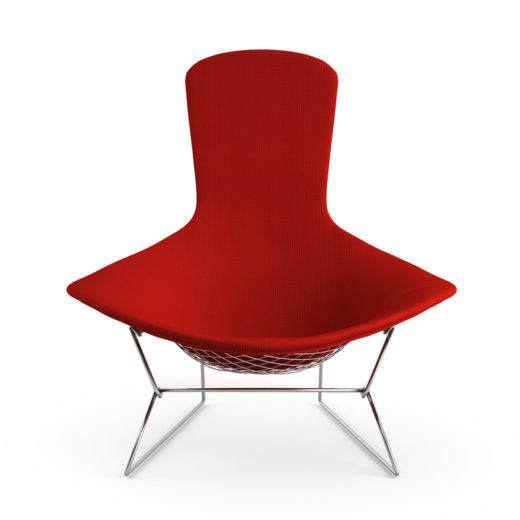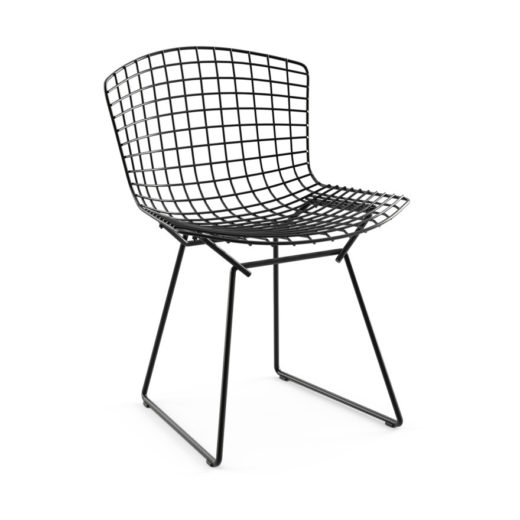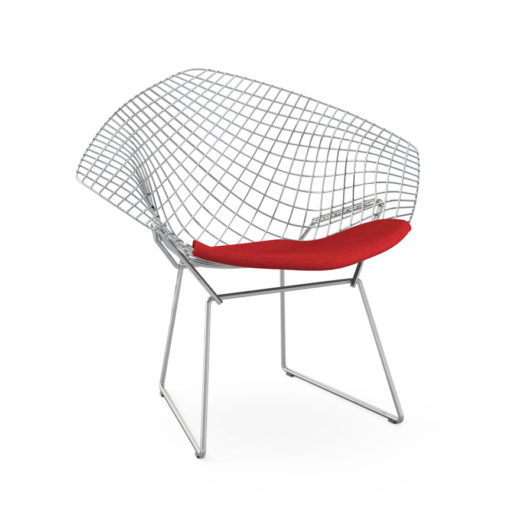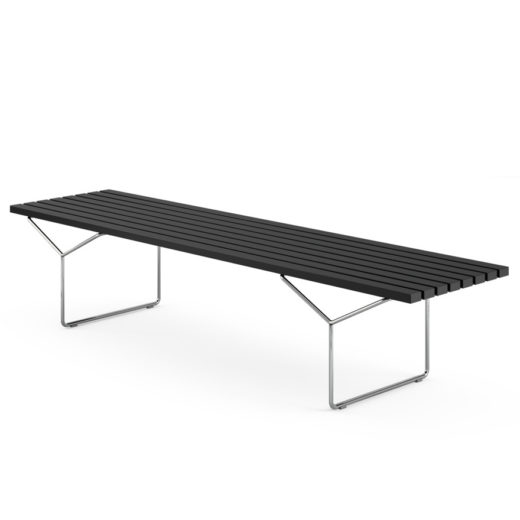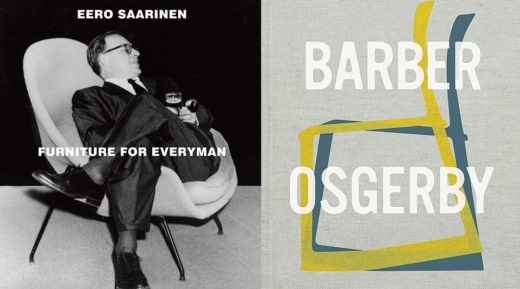In Conversation
Beverly Twitchell
on Harry Bertoia
“Some artists adopt a style and stick to it,” writes Beverly Twitchell in her new book Bertoia: The Metalworker. “Others invent new forms and methods as opportunities and needs arrive, as did Harry Bertoia.” Bertoia’s approach to design can be characterized in many ways – expressive yet pared down, intimate yet monumental – but his incredible breadth of work across numerous mediums is a result of his innate desire to create art in response to new opportunities and challenges. His career produced works of jewelry, sculpture and furniture inspired by the forces within nature yet grounded in Modernist principles.
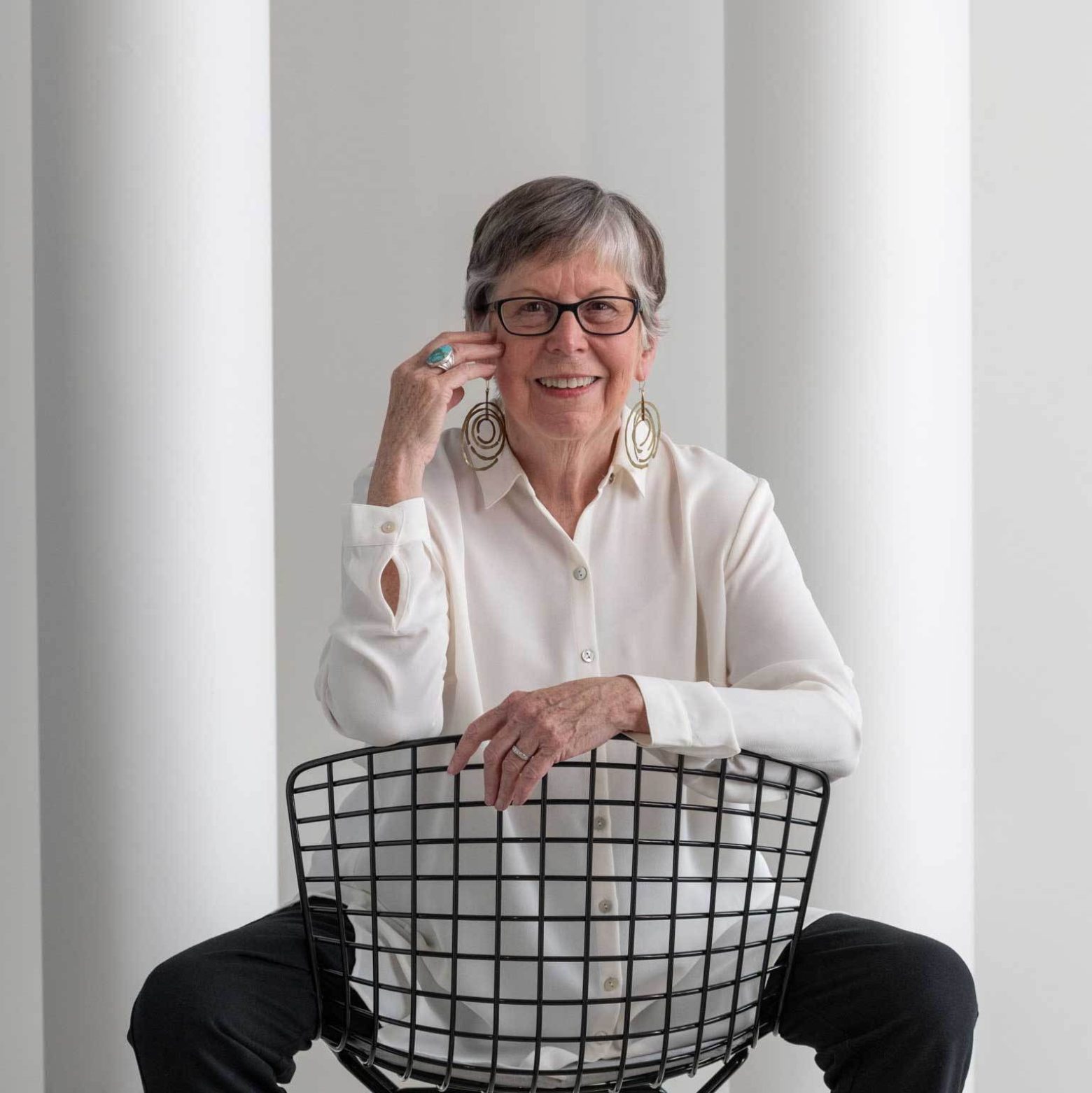
Twitchell, a Ph.D. and retired professor of art history, was a close friend of Harry Bertoia and his wife Brigitta. She often visited the Bertoias at their Pennsylvania home, studying Harry's creative process and photographing his work. In the 1970s, Twitchell curated an exhibition of Bertoia's work at the Allentown Art Museum publicly presenting his versatility as a designer, artist and sculptor.
We sat down with Beverly to learn more about her new book and time spent with Harry Bertoia himself.
How did you become acquainted with Harry Bertoia?
I met him in April of 1973. I went to visit him that summer with one of my friends and, thereafter until he died, I visited him usually several times a year. I did my PhD work a little over 100 miles up the road from him – partly because I was curating an exhibition of his work at the Allentown Art Museum and I needed to be somewhere within proximity. So, then, that year I was often at the Bertoias and Mrs. Bertoia was my good friend as well.
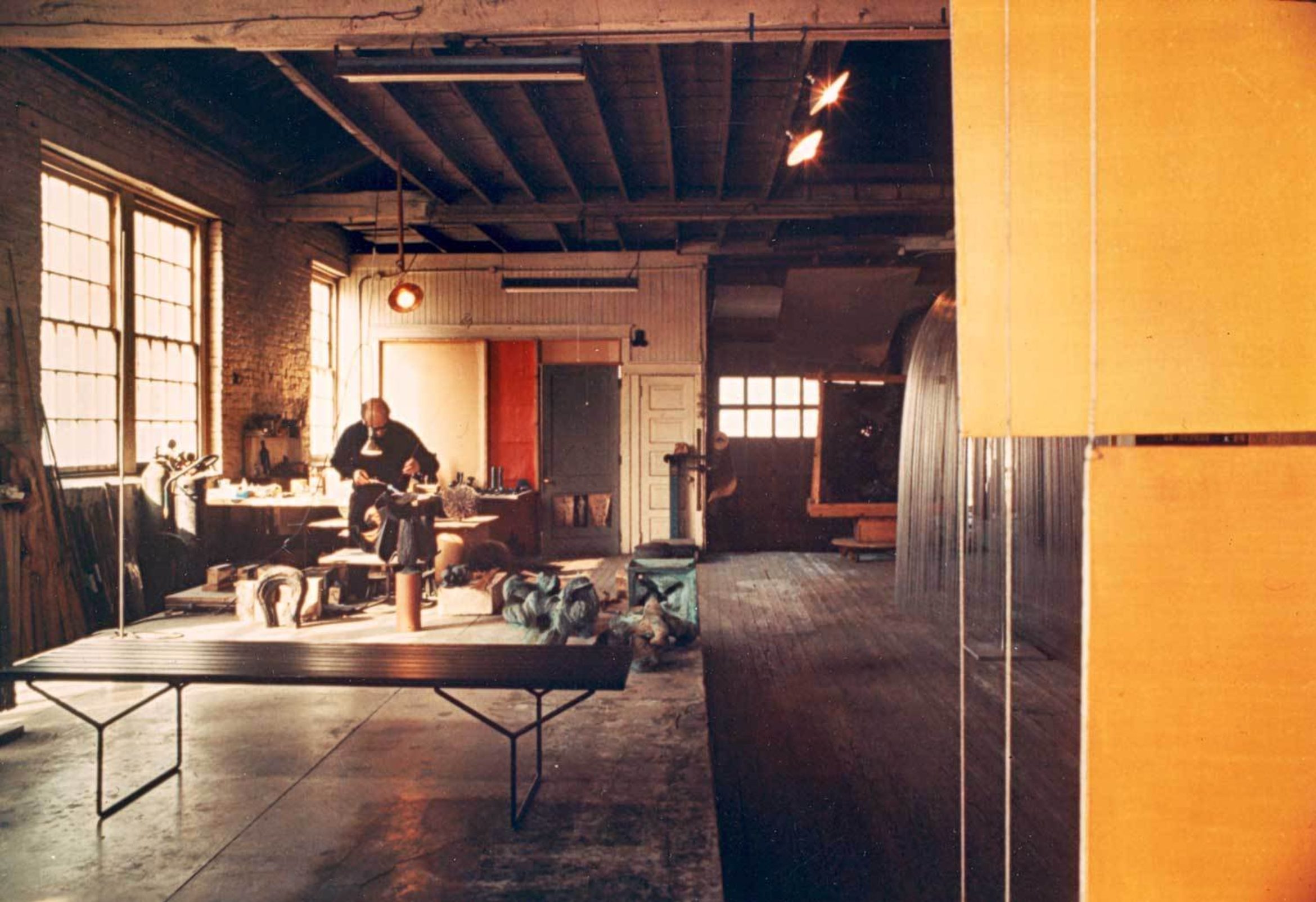
Tell us about your time visiting Harry and Brigitta in Pennsylvania.
They kept odd hours. Harry got up at seven and got himself ready for the day and went to his shop and came home at five. They had an early dinner and he took a nap and then he went back to work. They were night owls. Then he would come home and visit [for] a bit and go to work some more in his barn, recording, making graphics.
Brigitta got up late and stayed up late. When I visited, I got up early with Harry and I stayed up as late as they did and I didn’t get a nap. We spent lots of time talking. Harry and I would often go for a walk after dinner. We’d walk and talk when he was back from work after dinner. Brigitta and I would talk and play cards and sometimes go somewhere for awhile.
I studied pieces, I measured pieces for exhibition catalogs, I photographed pieces. I worked with his sculptures and monotypes in the daytime when they were doing other things. It all meshed nicely and we spent quality time together, but nevertheless, everyone was getting a lot done. I would come home sleep deprived, but tremendously stimulated by all the conversation. Every now and then, Harry and I would go to Philadelphia and go to an exhibit.
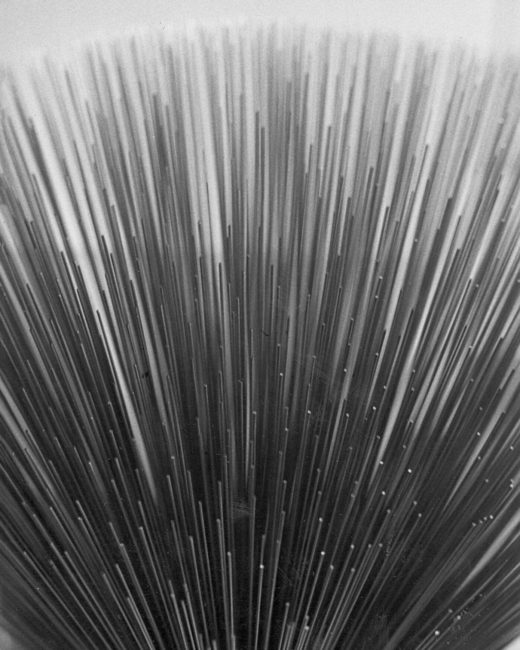
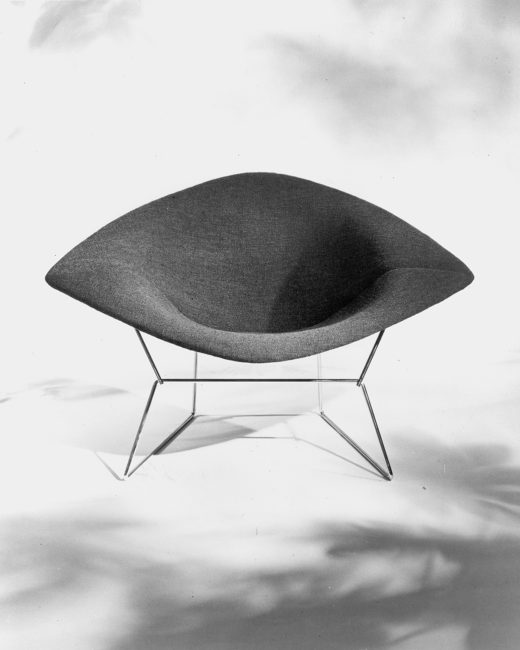
How did Bertoia’s appreciation of nature influence his work?
His view of life was all based on nature, perhaps partly because he was born on a farm. He studied some Asian philosophies, especially Daoism, which he came across when he lived in California. He believed there is a kind of life force – the Chinese call it Chi – in nature that pervades everything: paying attention to and understanding it is important in life. He believed that when you died, you became a part of nature. His work is mostly based on nature. And, certainly, from the fifties on that becomes especially strong.
Now, the chairs don’t look like they are based in nature, but they are based in geometry and geometry, as we understand it, really comes from nature. The chairs were designed with this in mind and this was revolutionary for chair manufacturers.
Why was the Bertoia Collection groundbreaking at its introduction?
Harry was designing chairs starting out with the human body. He wanted chairs that supported you well and comfortably. He said at one point, and this is very typical of Harry, “You design a chair as much as with your behind as with your head.” He and Dick Schultz and Bob Savage would be working on a chair and as soon as it was strong enough, they were sitting in it, wiggling around and trying to see how it fit.And metal furniture was a break from the tradition of using wood.
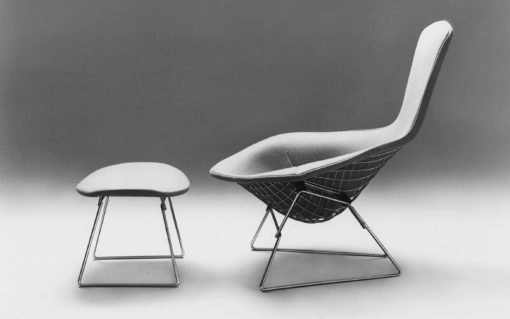
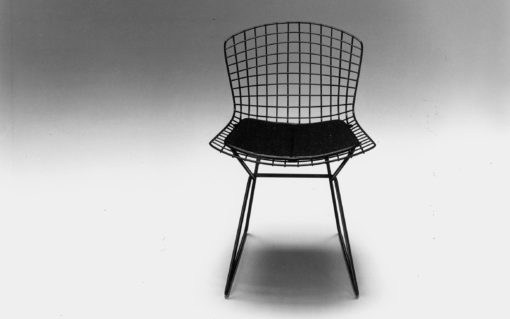
How did Bertoia create sculptural furniture that was also responsive to the human body?
He worked for Charles Eames in California who made the metal machine for bending plywood. [Harry] had this amazing engineering ability. He learned to make almost anything he wanted out of metal. Eames had sent him to study welding and then he started working ergonomically...Harry started designing essentially a skeletal human being that could bend so he could study how the human body moved, and especially sat. So, he was trying to study the engineering of anatomy as a beginning point for making chairs.
When he was a jeweler, [he considered] jewelry as sculpture for the body and he was interested in how it worked on the body. He made brooches that were six or seven inches wide so they went halfway between your shoulders. The jewelry was not easy to wear, but it was really sculptural. He had a three-dimensional sensibility. His sensibility could also be very linear and lots of the sculpture is linear. Wires are linear.
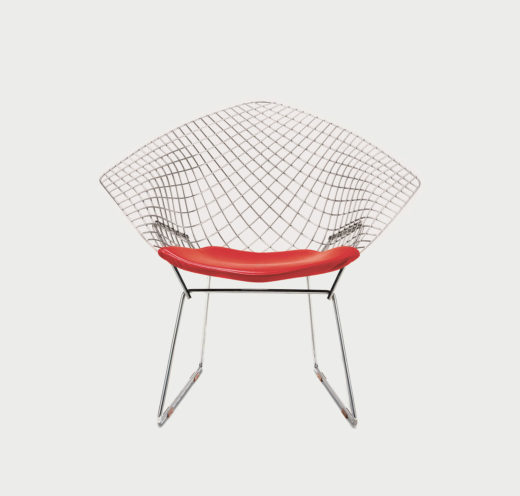
Some people call [Cranbrook] the American Bauhaus. Like the Bauhaus, it was very idealistic. Modernism is idealistic. Modernists believed that good design could make life better.
When did Bertoia begin working with wire? What drew him to it?
He started using wire because wire was inexpensive as far as metal goes. It's strong, you can do lots and lots of things with it. It’s efficient. Think about how much a Diamond Chair would weigh and cost if it were solid metal. It wouldn’t be as comfortable. It would be cold in the winter, hot in the summer.
His philosophical views seem very abstract, romantic and lovely, but he was also very practical and learned to think like a businessman. At Cranbrook, he worked with architects a lot – Eliel Saarinen, Eero Saarinen, Charlie Eames, Ben Baldwin, Harry Weese and others – all prominent architects. He learned to read architectural plans and look at them and be able to visualize the space. He knew that to make sculpture or to make furniture, you had to present proposals and be on budget and be on deadline. He learned how to be businesslike dealing with architects.
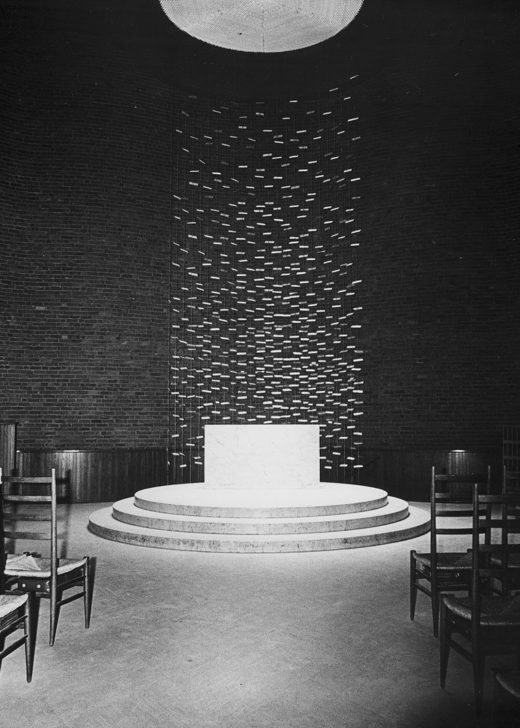
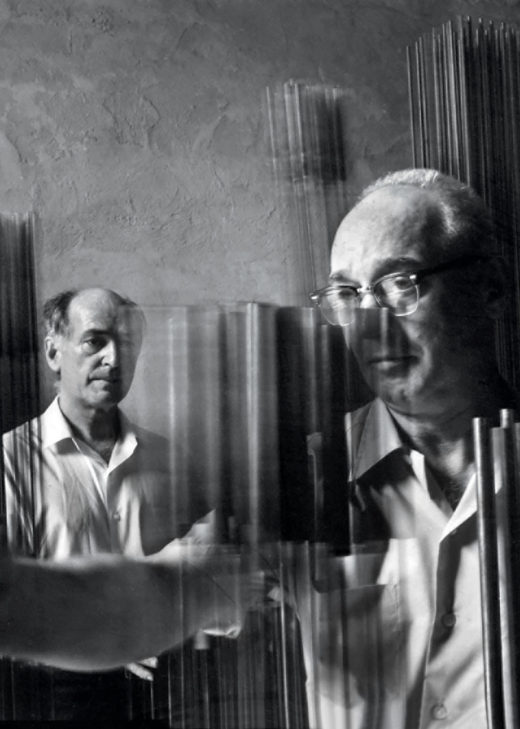
Bertoia went to Cranbrook with Florence Knoll, Eero Saarinen, Ralph Rapson and many other designers who later worked for Knoll. How did the Cranbrook connection follow him throughout his career?
Cranbrook was really where everything started for him. Obviously, it started a bit before. He had such a wonderful teacher at Cass Technical High School. I love the idea of your teacher telling you [that] you have to fill out this application for Cranbrook. She drove him to the interview. She thought he had great potential and I am sure that he was a wonderful student who couldn’t possibly learn as much as he wanted to as fast as he wanted to. And, as a teacher, that’s really thrilling to have a student who’s so receptive and so excited about it all.
Over and over and over in his life the big commissions came from people that he knew from Cranbrook or from people, later, that were associated with people that he knew from Cranbrook...It starts out with Brigitta, who he met at Cranbrook; Clifford West, who was the best man at his wedding; and he worked with Eero Saarinen for a couple of his most important commissions – the GM Tech Center, MIT Chapel and then Dulles Airport.
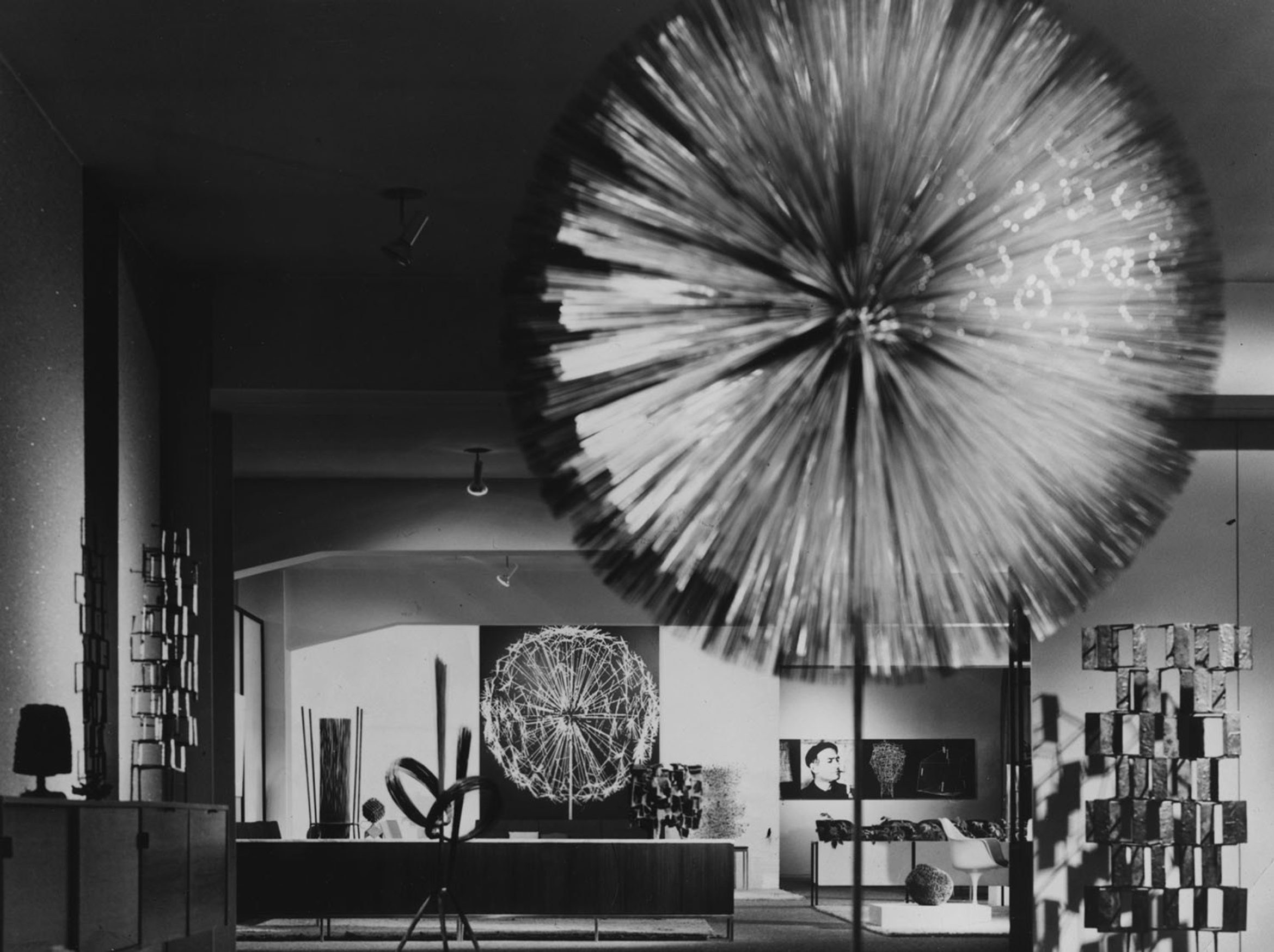
What about Cranbrook allowed for Modern ideals to flourish?
Before Cranbrook, Alfred Stieglitz was the most important importer of Modernism to the US and it is important to realize that Cranbrook had a critical mass of highly creative, highly motivated people. Their energy, their enthusiasm, their conversations all encouraged each other. They did a lot of collaborative work. Eliel Saarinen had an Arts and Crafts mentality and believed, like Frank Lloyd Wright, that architecture was the dominant art. Saarinen wanted all of the arts to basically contribute to architecture through metalwork, through textiles, through furniture.
I think that one of the things that was probably unconscious to them, was that they were almost all immigrants. They were immigrants from many European countries, but nevertheless there was this immigrant experience that they all shared. If Harry had been someplace where everybody else had been born in this country and had English as their first language, he might have felt more of an “other.” Cranbrook was this intense place were all of these things were happening. Some people call it the American Bauhaus. Like the Bauhaus, it was very idealistic. Modernism is very idealistic. Modernists believed that good design could make life better.
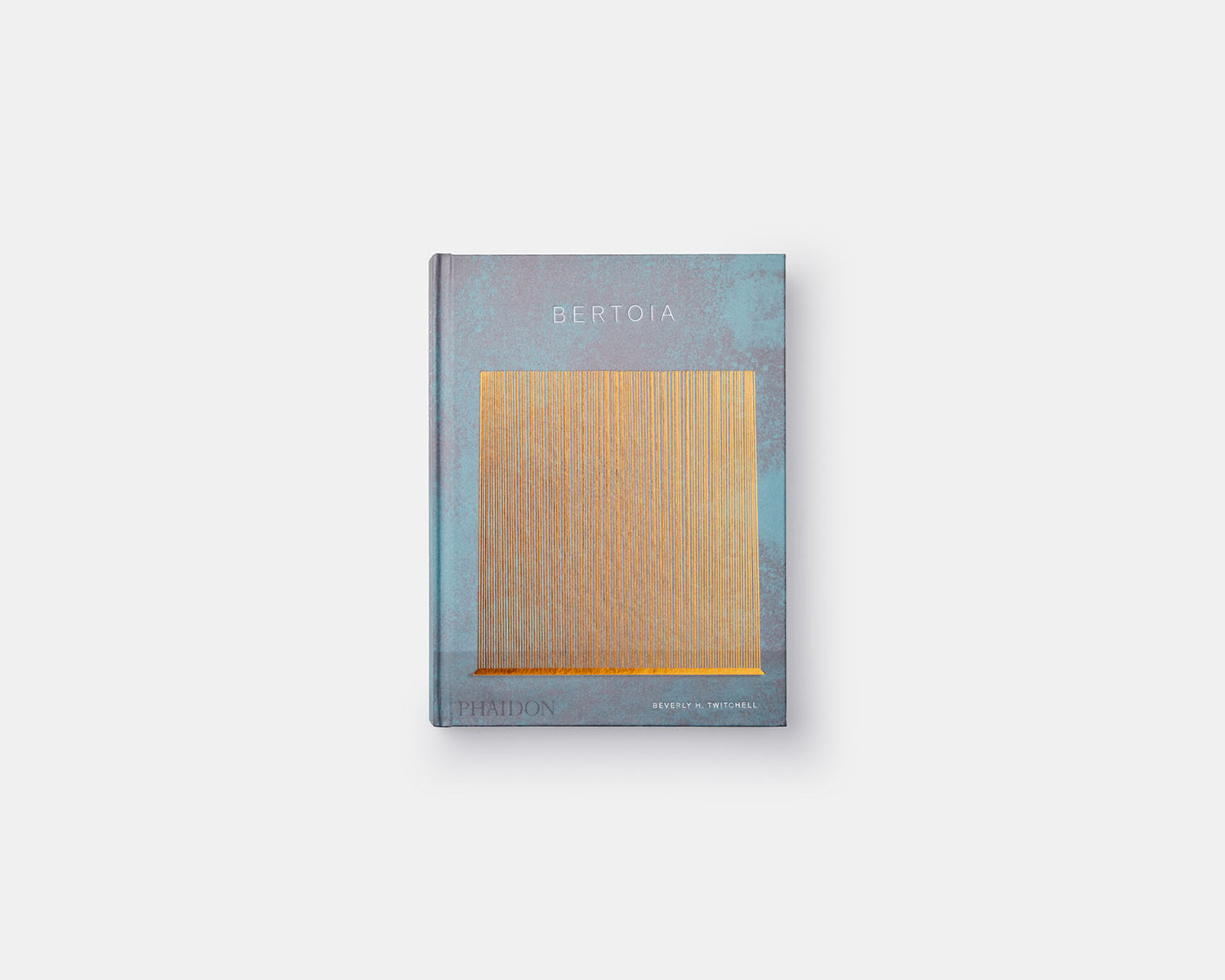
Why do you think that the Modern ideals championed by Bertoia and Shu and their peers have remained so relevant and influential over time?
Because they are so well founded. They seem right. I say that because I was educated as a Modernist. I had students who thought that I was awfully idealistic and my students were more cynical than I appeared to be. The notion that good design in a chair means that it’s better for your posture, its better for your back, it’s better for your legs and it is designed to do the job that it is designed to do. The whole idea that design is solving problems is one of the basic tenets of Modernism.
The Modernists came along and said that we want design to be the structure and the decoration – no applied ornament. That’s efficient. It’s economical. And if you do it right, it’s beautiful and timeless. Harry’s chairs do not look dated.






